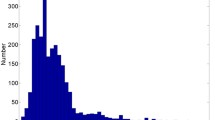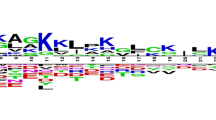Abstract
Antimicrobial peptides (AMPs) play an important role in the innate immune system that evolved in most living organisms. As a kind of natural antibiotics, it is promising for solving the problem of increasing antibiotic resistance. In view of this, it is highly desired to develop a fast and effective computational method for accurately predicting the functional types of AMPs, because the biological functions of AMPs are correlated with the type it belongs to. Although many efforts have been made in this area, to the best of our knowledge, most of the existing predictors only has the ability to deal with whether a peptide is an AMP or not, or a peptide belongs to which one type. However, there are many AMPs have two or more functional types, the phenomenon should worthy of our special notice, because they may have some unique biological functions for new drug design and disease treatment. In this study, in order to reflect the characteristic of multiplex AMPs, a new multi-label classifier based on sequence information and multi-label learning with label-specific features (LIFT) algorithm was developed. It was observed that, the absolute-true with jackknife test by the new predictor on a newly stringent benchmark dataset is 0.5040, and the success rates achieved by the new predictor are 5 % higher than this by iAMP-2L in the same dataset, indicating that our method is quite promising. We hope that the predictor may become a useful high-through tool in identifying the functional types of AMPs.

Similar content being viewed by others
References
Baker B et al (1997) Signaling in plant–microbe interactions. Science 276:726–733
Cai Y-D, Zhou G-P, Chou K-C (2005) Predicting enzyme family classes by hybridizing gene product composition and pseudo-amino acid composition. J Theor Biol 234:145–149
Chen Y-L, Li Q-Z (2007a) Prediction of apoptosis protein subcellular location using improved hybrid approach and pseudo-amino acid composition. J Theor Biol 248:377–381
Chen Y-L, Li Q-Z (2007b) Prediction of the subcellular location of apoptosis proteins. J Theor Biol 245:775–783
Chen W et al (2012) iNuc-PhysChem: a sequence-based predictor for identifying nucleosomes via physicochemical properties. PLoS One 7:e47843
Chen W et al (2013) iRSpot-PseDNC: identify recombination spots with pseudo dinucleotide composition. Nucleic Acids Res 41:e68
Chou KC (1995) A novel approach to predicting protein structural classes in a (20-1)-d amino acid composition space. Proteins Struct Funct Bioinform 21:319–344
Chou KC (2001) Prediction of protein cellular attributes using pseudo-amino acid composition. Proteins Struct Funct Bioinform 43:246–255
Chou K-C (2011) Some remarks on protein attribute prediction and pseudo amino acid composition. J Theor Biol 273:236–247
Chou K-C, Cai Y-D (2002) Using functional domain composition and support vector machines for prediction of protein subcellular location. J Biol Chem 277:45765–45769
Chou KC, Cai YD (2003) Predicting protein quaternary structure by pseudo amino acid composition. Proteins Struct Funct Bioinform 53:282–289
Chou K-C, Shen H-B (2008a) Cell-PLoc: a package of web servers for predicting subcellular localization of proteins in various organisms. Nat Protoc 3:153–162
Chou K-C, Shen H-B (2008b) ProtIdent: a web server for identifying proteases and their types by fusing functional domain and sequential evolution information. Biochem Biophys Res Commun 376:321–325
Chou K-C, Shen H-B (2010) Cell-PLoc 2.0: an improved package of web-servers for predicting subcellular localization of proteins in various organisms. Nat Sci 2:1090–1103
Chou K-C, Zhang C-T (1995) Prediction of protein structural classes. Crit Rev Biochem Mol Biol 30:275–349
Chou K-C, Wu Z-C, Xiao X (2011) iLoc-Euk: a multi-label classifier for predicting the subcellular localization of singleplex and multiplex eukaryotic proteins. PLoS One 6:e18258
Du P et al (2012) PseAAC-Builder: a cross-platform stand-alone program for generating various special Chou’s pseudo-amino acid compositions. Anal Biochem 425:117–119
Gordon YJ, Romanowski EG, McDermott AM (2005) A review of antimicrobial peptides and their therapeutic potential as anti-infective drugs. Curr Eye Res 30:505–515
Gromiha MM (2005) A statistical model for predicting protein folding rates from amino acid sequence with structural class information. J Chem Inf Model 45:494–501
Huang Y et al (2010) CD-HIT Suite: a web server for clustering and comparing biological sequences. Bioinformatics 26:680–682
Jenssen H, Hamill P, Hancock RE (2006) Peptide antimicrobial agents. Clin Microbiol Rev 19:491–511
Jiang X et al (2008) Using Chou’s pseudo amino acid composition based on approximate entropy and an ensemble of AdaBoost classifiers to predict protein subnuclear location. Amino Acids 34:669–675
Joseph S et al (2012) ClassAMP: a prediction tool for classification of antimicrobial peptides. IEEE/ACM Trans Comput Biol Bioinform 9:1535–1538
Khosravian M et al (2013) Predicting antibacterial peptides by the concept of Chou’s pseudo-amino acid composition and machine learning methods. Protein Pept Lett 20:180–186
Lata S, Sharma B, Raghava G (2007) Analysis and prediction of antibacterial peptides. BMC Bioinform 8:263
Lin W-Z et al (2013) iLoc-Animal: a multi-label learning classifier for predicting subcellular localization of animal proteins. Mol Biosyst 9:634–644
Liu W-M, Chou K-C (1999) Prediction of protein secondary structure content. Protein Eng 12:1041–1050
Mohabatkar H, Mohammad Beigi M, Esmaeili A (2011) Prediction of GABA<sub>A</sub>receptor proteins using the concept of Chou’s pseudo-amino acid composition and support vector machine. J Theor Biol 281:18–23
Osusky M et al (2000) Transgenic plants expressing cationic peptide chimeras exhibit broad-spectrum resistance to phytopathogens. Nat Biotechnol 18:1162–1166
Qiu J-D et al (2009) Prediction of G-protein-coupled receptor classes based on the concept of Chou’s pseudo amino acid composition: an approach from discrete wavelet transform. Anal Biochem 390:68–73
Shen H-B, Chou K-C (2005) Predicting protein subnuclear location with optimized evidence-theoretic K-nearest classifier and pseudo amino acid composition. Biochem Biophys Res Commun 337:752–756
Shen H-B, Chou K-C (2007) EzyPred: a top-down approach for predicting enzyme functional classes and subclasses. Biochem Biophys Res Commun 364:53–59
Shen H-B, Yang J, Chou K-C (2006) Fuzzy KNN for predicting membrane protein types from pseudo-amino acid composition. J Theor Biol 240:9–13
Shen H-B, Song J-N, Chou K-C (2009) Prediction of protein folding rates from primary sequence by fusing multiple sequential features. J Biomed Sci Eng 2:135–207
Thomas S et al (2010) CAMP: a useful resource for research on antimicrobial peptides. Nucleic Acids Res 38:D774–D780
Wang X, Li G-Z (2012) A multi-label predictor for identifying the subcellular locations of singleplex and multiplex eukaryotic proteins. PLoS One 7:e36317
Wang P et al (2011) Prediction of antimicrobial peptides based on sequence alignment and feature selection methods. PLoS One 6:e18476
Wen H, Liu J-J, Li Q-Z (2013) Motif analysis and identification of antifreeze protein sequences. In: Proceedings of the 2nd international conference on computer science and electronics engineering. Atlantis Press
Wu Z-C, Xiao X, Chou K-C (2012) iLoc-Gpos: a multi-layer classifier for predicting the subcellular localization of singleplex and multiplex gram-positive bacterial proteins. Protein Pept Lett 19:4–14
Xiao X et al (2006) Using cellular automata images and pseudo amino acid composition to predict protein subcellular location. Amino Acids 30:49–54
Xiao X, Wang P, Chou K-C (2011a) GPCR-2L: predicting G protein-coupled receptors and their types by hybridizing two different modes of pseudo amino acid compositions. Mol Biosyst 7:911–919
Xiao X, Wang P, Chou K-C (2011b) Quat-2L: a web-server for predicting protein quaternary structural attributes. Mol Divers 15:149–155
Xiao X et al (2013) iAMP-2L: a two-level multi-label classifier for identifying antimicrobial peptides and their functional types. Anal Biochem 436:168–177
Zhang M-L (2011) LIFT: multi-label learning with label-specific features. In: Proceedings of the twenty-second international joint conference on artificial intelligence, vol 2. AAAI Press, pp 1609–1614
Zhang Z, Miller W, Lipman DJ (1997) Gapped BLAST and PSI-BLAST: a new generation of protein database search programs. Nucleic Acids Res 25:17
Zhou GP, Cai YD (2006) Predicting protease types by hybridizing gene ontology and pseudo amino acid composition. Proteins Struct Funct Bioinform 63:681–684
Zou H-L, Xiao X (2015) A new multi-label classifier in identifying the functional types of human membrane proteins. J Membr Biol 248:179–186
Author information
Authors and Affiliations
Corresponding author
Ethics declarations
Conflict of Interest
There is no conflict of interest.
Ethical approval
This article does not contain any studies with human participants performed by any of the authors.
Informed consent
Informed consent was obtained from all individual participants included in the study.
Rights and permissions
About this article
Cite this article
Zou, HL. A New Multi-label Classifier for Identifying the Functional Types of Singleplex and Multiplex Antimicrobial Peptides. Int J Pept Res Ther 22, 281–287 (2016). https://doi.org/10.1007/s10989-015-9511-7
Accepted:
Published:
Issue Date:
DOI: https://doi.org/10.1007/s10989-015-9511-7




